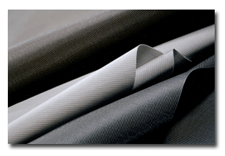Amid growing government and public concerns about the safety of imported items, Philadelphia
University has established the Institute for Textile and Apparel Product Safety (ITAPS) to help
ensure the safety of clothing made overseas. Dr. David Brookstein, dean of Philadelphia
University’s School of Engineering and Textiles and an engineer with expertise in textile
technology, will be executive director of ITAPS, and Dr. Jeffrey Ashley, associate professor of
chemistry, will be technical director.
As part of its mission, the institute is conducting research to determine if potentially
toxic chemicals are present in imported clothing; identify which toxic chemicals and agents are
being used and the extent of their use; and help establish protocols for testing and evaluating
imported apparel items. Currently, the institute is testing for the presence of polybrominated
diphenyl ethers (PBDEs), a textile flame retardant that has been banned in the European Union and
has known health consequences. Within the next several weeks, the institute will begin monitoring
for the presence of formaldehyde in children’s imported clothing and bedding.
In a related development, Brookstein recently addressed the issue of the safety of imported
apparel at a public hearing in Washington before the federal Interagency Working Group on Import
Safety, established in July by President Bush to improve the safety of imported products. The
interagency working group’s charge comes on the heels of recent highly publicized incidents
involving Chinese-made toys and toothpaste found to have high levels of chemicals and toxins.
“With concerns growing about the safety of imported toys and toiletries coming into this
country, we recognized that imported textile and apparel items might also contain various levels of
toxic chemicals,” Brookstein said. “As one of the nation’s leading textiles schools, we feel it is
important to use our expertise to investigate the possibility of unsafe exposure to potentially
toxic textile chemicals and dyes.”
The main problem, Brookstein said, is that potentially dangerous textile dyes and finishing
agents that are no longer used by US manufacturing companies may still be in use overseas for
textile and apparel production.
For the year that ended July 31, more than $93 billion in textiles and apparel were imported
to the United States from around the globe, according to data from the Office of Textiles and
Apparel of the US Department of Commerce. China accounted for more than 32 percent of all imported
textiles and apparel that year.
In recent weeks, Mattel has recalled some 9.5 million toys in the United States because of
safety concerns about lead. And in June, the US Food and Drug Administration warned consumers not
to use toothpaste made in China after some brands were found to contain a poisonous ingredient also
found in antifreeze.
Michael O. Leavitt, secretary of the US Department of Health and Human Services and chair of
the Interagency Working Group on Import Safety, wrote in the working group’s initial September 10
report that, while Americans benefit from among the highest standards of consumer protection in the
world, “it is not possible to eliminate all risk with imported and domestic products, [and] being
smarter requires us to find new ways to protect American consumers and continually improve the
safety of our imports.”
Philadelphia University, with its long-standing history of textile-related programs and a
research center already dedicated to state-of-the-art research in textiles and apparel, is
perfectly positioned to lead efforts to identify problems and help ensure the safety of imported
apparel. The university also is a member of the National Textile Center, a federally funded group
made up of eight top universities that conduct textiles research.
Press Release Courtesy Of Philadelphia University
October 30, 2007





